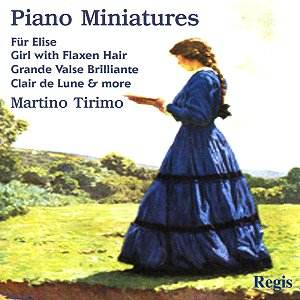 Composer: Various
Composer: Various
Works: 1. Messe Solenelle de Saint Hubert 2. Ceremonial de la Venerie 3. Les Sonneurs du Bien Allé de Compiègne et nos amis du Point du Jour de Soissons
Performers: Unspecified brass ensemble
Recording: 1981 in St. Eustace, Paris (Disc 1), 1969 & 1978 in Paris (Disc 2), 6/96 (Disc 3)
Label: Calliope
The collection “Fanfares and Hunting Music for Brass” presents a distinctive niche within the classical repertoire, focusing on fanfares and ceremonial music that celebrates the French tradition of venery. These compositions, rooted deeply in the cultural practices of hunting, evoke the grandeur of the chase through their vibrant brass textures and rhythmic vitality. Such music offers not only a glimpse into the historical context of French hunting customs but also serves as a testament to the artistry involved in brass performance, revealing a realm where music, tradition, and nature intersect.
The performances across these three discs showcase a robust display of brass playing, characterized by a pronounced vibrato and a bold, forthright approach that can be both invigorating and overwhelming. The “Messe Solenelle de Saint Hubert” opens the first disc, establishing a ceremonial atmosphere steeped in reverence and grandeur, yet the sheer power of the brass can sometimes border on the excessive. The performers execute the intricate counterpoints with commendable precision, yet one might argue that the relentless intensity occasionally leads to an emotional monotony, lacking the dynamic contrasts that could elevate the listening experience.
Moving to “Ceremonial de la Venerie,” the interpretation becomes even more exuberant. The fanfares resonate with a vibrant spirit that seems to leap from the speakers, yet this unyielding fervor can be disorienting. The ensemble’s technical prowess is evident, particularly in the crisp articulations and the seamless blending of timbres. However, the lack of respite within the program may leave listeners yearning for a moment of introspection amid the unceasing exuberance. In terms of historical performance practices, the style is reminiscent of the mid-20th-century Paris Conservatoire Orchestra, yet the recordings here amplify those characteristics to an almost hyperbolic extent.
The third disc, featuring “Les Sonneurs du Bien Allé de Compiègne et nos amis du Point du Jour de Soissons,” marks a significant improvement in sound quality due to its digital recording. The clarity and definition of the instruments in this disc allow for a more nuanced appreciation of the ensemble’s interplay. Here, the dynamic range is more pronounced, and the textures reveal a greater complexity that was somewhat obscured in the earlier recordings. This disc, while the shortest, offers a refreshing contrast to the preceding tracks and showcases the ensemble’s ability to evoke a pastoral serenity amidst the celebratory chaos.
The engineering quality across the recordings varies, with the earlier discs displaying the limitations of their time. The spaciousness of the acoustic in St. Eustace is commendable, yet some passages suffer from muddiness, particularly when multiple voices converge. In contrast, the later digital recordings offer a sharper focus, allowing for a clearer delineation of melodic lines. The overall presentation, while ambitious, may have benefitted from a more judicious selection of repertoire that intersperses these vibrant fanfares with pieces that allow for moments of reflection and contrast.
While Calliope has produced remarkable recordings in the past, this particular set might alienate some listeners, especially those unfamiliar with the specific demands of the genre. The sheer volume and stylistic choices may prove polarizing, and as such, the set seems better suited for enthusiasts of the brass repertoire or the hunting tradition rather than the general classical audience. The collection, for all its exuberance and technical merit, ultimately feels like an exercise in excess rather than a balanced portrayal of the rich tapestry of French hunting music.
This compilation stands as a bold, if somewhat overwhelming, exploration of a niche repertoire. The musicianship is undeniably skilled, and the spirit of the music bursts forth with palpable energy. However, a more varied program might have better served the listener, providing moments of contrast and nuance that are crucial for deeper engagement with the music. As it stands, this set serves as a curious artifact of its genre, one that may resonate with a select audience but risks alienating those outside its specific cultural embrace.



